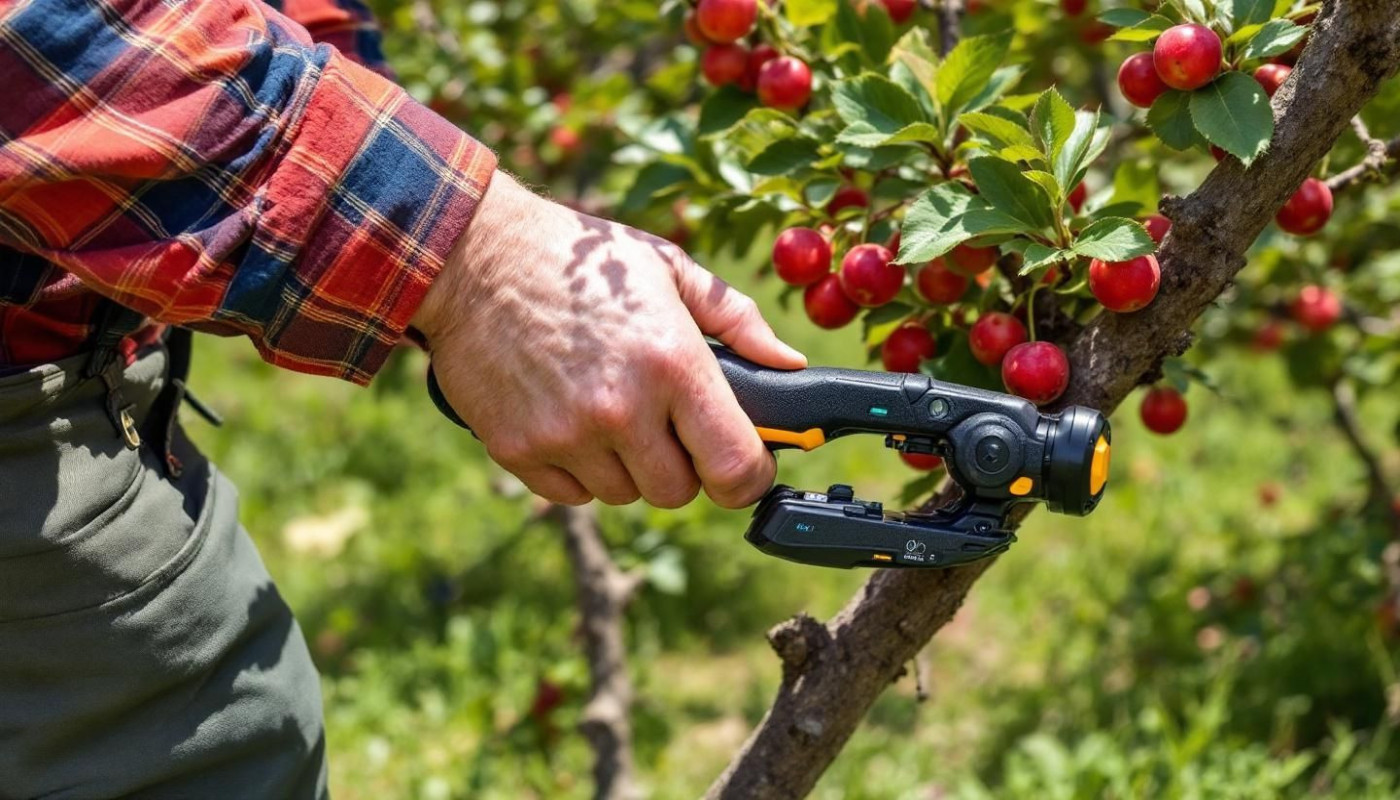Table of contents
Modern electric pruning tools are revolutionizing the way agricultural tasks are performed, offering efficiency and precision that traditional manual methods simply cannot match. With the increasing demand for sustainable farming and higher crop yields, understanding these innovations has become essential for anyone involved in agriculture. Dive deeper to discover how these advanced tools not only enhance productivity but also contribute to the overall health of plants and the well-being of farm workers.
Boosting productivity and efficiency
Modern electric pruning tools have revolutionized agricultural productivity by delivering efficient pruning processes that dramatically outpace traditional manual methods. Utilizing advanced farming technology, these devices empower workers to complete pruning tasks in a fraction of the time, enabling extensive labor savings and allowing large agricultural operations to manage more hectares daily. The precision and power of electric pruning tools provide uniform and consistent cuts, which promote healthier plant growth and increase yields. Covering greater areas with fewer workers translates to both economic benefits for farm owners and a more sustainable approach to resource management in large-scale agriculture.
Another key advantage lies in the ergonomic design of contemporary electric pruning tools. Ergonomic design refers to shaping equipment to fit the natural movements and postures of the human body, reducing strain and discomfort during repetitive tasks. For workers, this means that even during prolonged periods of use, operator fatigue is minimized, making it feasible to conduct extensive pruning without negative impacts on health or performance. This combination of efficient pruning, minimized physical effort, and significant labor savings positions electric pruning tools as indispensable assets in the evolution of modern farming technology.
Enhancing plant health and yield
Electric pruning tools represent a significant pruning innovation by enabling growers to perform clean cuts that are much smoother and more precise than traditional manual methods. These clean cuts minimize the trauma inflicted on plant tissue, directly reducing the risk of pathogen entry and subsequent disease. By promoting optimal wound healing, electric pruners ensure that plants recover rapidly, maintaining their vigor and resilience throughout the growing season. This advanced approach to precision agriculture not only preserves plant health but also optimizes sap flow and nutrient distribution within the plant, both of which are vital contributors to increased fruit set and improved crop yield. Enhanced healing and reduced infection rates mean less downtime for plants and less need for chemical interventions, resulting in healthier orchards and vineyards.
Boosting crop yield is one of the most sought-after outcomes in modern agriculture, and electric pruning tools are at the forefront of this transformation. Their efficient operation allows for more consistent pruning across large fields, supporting uniform plant development and maximizing the productive potential of every row. In addition, specialized brands such as Infaco USA provide cutting-edge equipment tailored to the needs of professional growers, exemplifying the advances in electric pruning technology. As growers continue to adopt such innovative tools, the cumulative benefits for plant health and productivity become ever more pronounced, reinforcing the essential role of precision agriculture in sustainable, profitable farming.
Improving worker safety and comfort
Worker safety and operator comfort have become key priorities in agricultural ergonomics, thanks to the widespread adoption of modern electric pruning tools. These safe pruning tools are specifically engineered to minimize the risk of repetitive strain injuries that often affect those performing manual, repetitive cutting tasks. Electric models offer increased control through precise blade operation and well-balanced handles, promoting pruning safety and reducing the likelihood of accidental slips or cuts. Integrating advanced safety features such as automatic blade stops and user-friendly interfaces further supports safe operation, even during extended use in challenging outdoor environments.
Among the most significant technological advancements is the inclusion of an anti-vibration system. This system actively dampens the vibrations transmitted to the operator’s hands and arms, a factor known to contribute to long-term health issues like hand-arm vibration syndrome. By reducing exposure to these harmful vibrations, electric pruning tools not only protect workers but also enhance operator comfort and productivity. With occupational safety expertise driving development, electric pruning tools now deliver agricultural ergonomics that support the well-being and efficiency of agricultural workers, setting new benchmarks for pruning safety across the industry.
Reducing environmental impact
Electric pruning tools play a transformative role in sustainable farming by offering a cleaner and quieter alternative to traditional gas-powered equipment. Unlike their gas counterparts, battery powered pruners operate with low emission tools that significantly decrease the carbon footprint—the measure of greenhouse gases produced directly or indirectly by an activity. In agriculture, a smaller carbon footprint means less environmental damage and a step toward green agriculture practices. These tools contribute to eco-friendly pruning by reducing both air pollution from engine emissions and noise pollution, improving working conditions for farm workers and surrounding communities. Rechargeable batteries further enhance their sustainability by enabling repeated use, decreasing dependency on single-use fuels, and supporting the broader adoption of green energy sources. As a result, such equipment is a driving force behind eco-friendly and efficient agricultural operations.
Facilitating innovation in agriculture
The adoption of electric pruning tools marks a pivotal shift in agriculture innovation, driving the evolution of modern farming practices. By seamlessly blending with digital farming systems, these smart tools enable growers to transition from manual methods to connected agriculture. Data integration, defined as the systematic combination and analysis of information from multiple sources to provide unified insights, plays a central role in this transformation. When electric pruning devices are connected to farm management platforms, real-time data on plant health, productivity, and maintenance can be collected and analyzed, allowing for precision pruning strategies based on actual field conditions.
Such advancements are crucial for the rise of data-driven agriculture, where every action—ranging from optimizing pruning schedules to targeting individual plants—can be tailored for maximum efficiency and yield. Smart tools equipped with sensors and connectivity features feed essential information into digital farm management systems, helping farmers make informed decisions. This synergy supports resource optimization, reduces labor costs, and minimizes waste, contributing to a more sustainable and profitable agricultural enterprise.
Integration of electric pruning tools with digital platforms not only enhances precision but also supports traceability and compliance with regulatory standards. In addition, the ability to monitor and adjust pruning techniques remotely via smart devices introduces new possibilities for large-scale and specialty crop operations. These developments reflect a broader trend toward connected agriculture, where intuitive technology augments human expertise and ensures that best practices are implemented consistently across diverse environments.
The ongoing evolution of smart tools and digital solutions establishes a robust foundation for future-proofing farming operations. As agriculture innovation accelerates, embracing data integration and connected systems will remain a cornerstone for producers aiming to stay competitive. The widespread use of precision pruning, coupled with advanced monitoring and analytics, empowers farms to respond proactively to environmental changes and market demands, securing resilience and growth in the face of ongoing challenges.
Similar

Exploring The Effectiveness Of Mulchers Vs Chippers In Land Restoration

Exploring The Efficacy Of Ultrasonic Repellers In Modern Pest Control

Where can we buy a premium rainwater chain ?

